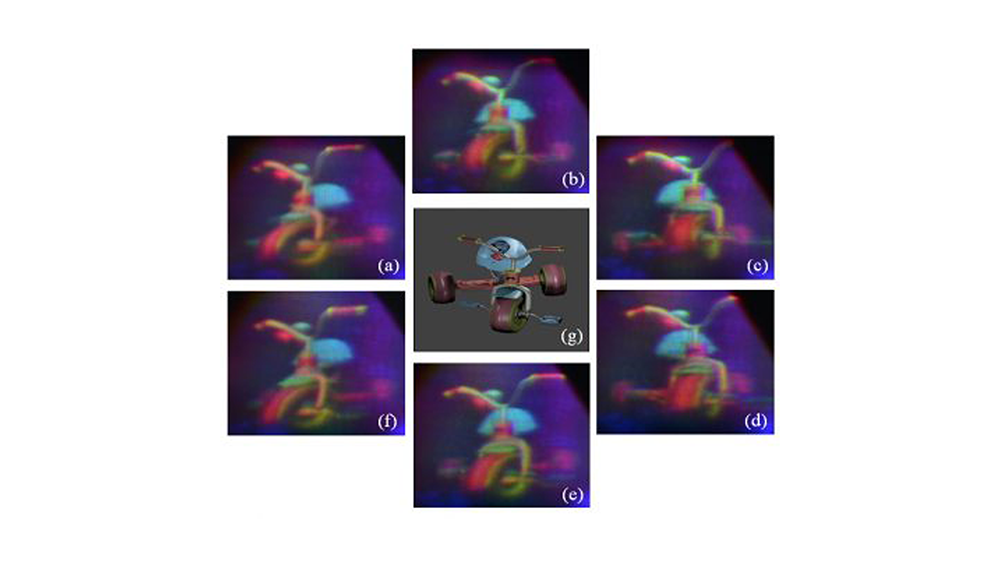A coarse integral holography approach for real 3D colour video display
We have developed a dynamic coarse integral holography approach using opto-mechanical scanning, coarse integral optics and a low space-bandwidth-product high-bandwidth spatial light modulator to display dynamic holograms with a large space-bandwidth-product at video rates, combined with an efficient rendering algorithm to reduce the information content.
March 17, 2016
Optics Express 2016
Authors
Jhen-Si Chen (University of Cambridge)
Quinn Smithwick (Disney Research)
Daping Chu (University of Cambridge)
A coarse integral holography approach for real 3D colour video display
A colour holographic display is considered the ultimate apparatus to provide the most natural 3D viewing experience. It encodes a 3D scene as holographic patterns that then are used to reproduce the optical wavefront. The main challenge at present is for the existing technologies to cope with the full information bandwidth required for the computation and display of holographic video. We have developed a dynamic coarse integral holography approach using opto-mechanical scanning, coarse integral optics, and a low space-bandwidth-product high-bandwidth spatial light modulator to display dynamic holograms with a large space-bandwidth-product at video rates, combined with an efficient rendering algorithm to reduce the information content. This makes it possible to realise a full-parallax, colour holographic video display with a bandwidth of 10 billion pixels per second, and an adequate image size and viewing angle, as well as all relevant 3D cues. Our approach is scalable, and the prototype can achieve even better performance with continuing advances in hardware components.

